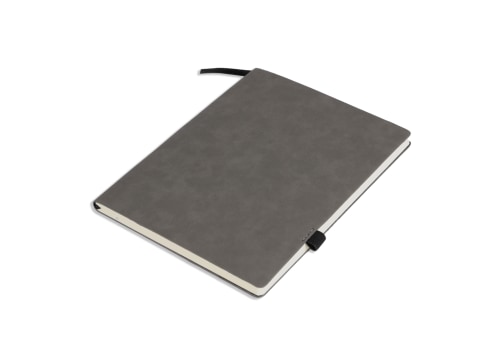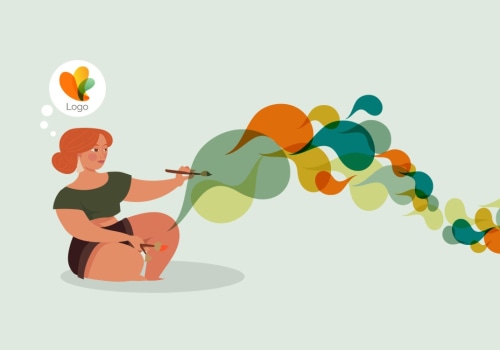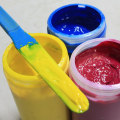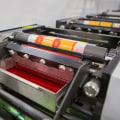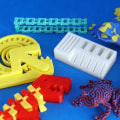Screen printing is an age-old art that has been used for centuries to create beautiful prints on various materials. From t-shirts to posters to promotional products, this printing method can be used to produce a wide range of products with stunning visuals and long-lasting durability. In this comprehensive overview, we'll take a look at the history and applications of screen printing, the process involved in creating prints, and the costs associated with it. We'll also look at the benefits of this printing method and how it compares to other printing methods.
With this knowledge, you'll be well-equipped to make an informed decision when choosing a printing method for your next project.
Screen printing
is a popular printing method used for a variety of products, from t-shirts to promotional items. It is a type of stencil printing in which an image or design is transferred onto a substrate by pressing ink through a mesh screen. The process is simple and cost-effective, making it a popular choice among professional printers. The screen printing process begins by creating a stencil of the desired design.This is usually done by stretching a fine mesh material over a frame and then using a light-sensitive emulsion to create an opaque film on the mesh. Once the emulsion has dried, the desired image or design is then transferred onto the screen. Ink is then poured onto the surface of the screen and pushed through with a squeegee. The ink is then transferred onto the substrate, creating the desired design.
Screen printing can be used on a variety of materials, including paper, plastic, glass, wood, and fabric. It is also possible to use different types of ink such as solvent-based, water-based, and plastisol-based ink. Each type of ink has its own advantages and disadvantages, so it's important to choose the one that best suits your needs. One of the main advantages of screen printing compared to other printing methods is its cost-effectiveness.
It is much cheaper than other methods such as digital printing or offset printing and also requires less set-up time. In addition, it produces vivid colors and crisp lines that are difficult to replicate with other methods. The cost associated with screen printing depends on several factors, such as the type of material used, the complexity of the design, and the number of colors used. Generally, the cost for one color prints on t-shirts is around $2-$6 per shirt for up to 25 shirts.
For more complex designs with multiple colors, the cost can range from $3-$15 per shirt for up to 25 shirts. The amount of time needed to produce a screen printed product depends on the complexity of the design and the quantity needed. Generally speaking, it takes around two days for simple designs with one color and up to five days for more complex designs with multiple colors. To ensure that your screen printed products last longer, it’s important to take proper care of them.
Be sure to wash them inside out in cold water and air dry them instead of using a dryer. Additionally, avoid using bleach or fabric softener when washing your screen printed items as this can damage them over time. When working with a screen printer, it’s important to be clear about your expectations from the start. Make sure you provide detailed instructions regarding your desired design and provide high-quality artwork if needed.
It’s also important to communicate any changes or modifications in a timely manner so that your project can be completed on time.
Caring for Screen Printed Products
When it comes to screen printed products, proper care and maintenance is key. To ensure that the print is long-lasting and vibrant, there are some important steps you should take to care for your screen printed items. One of the most important steps is to wash your garments and other items in cold water with a mild detergent. Hot water and harsh chemicals can cause the ink to fade or crack over time.Additionally, it's important to avoid using bleach or fabric softeners, as these can also cause fading. When washing your screen printed items, it's best to turn them inside out before putting them in the washing machine. This will help protect the print from friction or abrasion. You should also avoid drying your items in a dryer, as high temperatures can damage the print.
Instead, hang dry your items or lay them flat on a towel. When ironing screen printed items, it's important to use a low temperature setting and place a cloth between the garment and the iron. This will help protect the print from the direct heat of the iron. Finally, when storing screen printed items, be sure to keep them away from direct sunlight or other sources of heat. Sunlight and heat can cause the ink to fade over time.
Screen Printing
Caring for screen printed productsCold WaterMild DetergentNo BleachNo Fabric SoftenerLow Temperature Iron SettingAvoid Sunlight/HeatAdvantages of Screen Printing
Screen printing is a popular and versatile printing method that is used for a variety of products including t-shirts, promotional items, and more. There are many advantages to using screen printing as a printing method, and it is important to consider these advantages when selecting the best method for your project.One of the major advantages of screen printing is its cost-effectiveness. It is an economical option for large-scale projects, as it requires minimal setup costs and has low running costs. Additionally, the inks used in screen printing are often more durable and long-lasting than other printing methods. Screen printing also offers superior color accuracy and vibrancy when compared to other methods, such as digital printing.
The inks used in screen printing are applied directly onto the substrate, resulting in a more vivid and consistent finish. This makes it an ideal choice for projects that require vibrant colors and intricate designs. Furthermore, screen printing allows for greater control over the design process. The printers can easily adjust the amount of ink used, allowing for intricate details to be printed with ease.
Additionally, the ink can be manipulated to create unique textures or patterns on the printed material. Finally, screen printing is also ideal for projects that require specific customizations. It is possible to print multiple colors on one design, allowing for more creative freedom when designing promotional items or apparel.
Screen Printing Cost
Screen printing is an affordable way to create promotional items in bulk, but it's important to understand what factors influence the cost of a job. The most significant factor is the number of colors used in the design.Screen printing typically requires one screen for each color, so the more colors, the more expensive the job will be. Additionally, the number of items printed and the complexity of the design can also affect the cost. In terms of cost per item, screen printing is generally more economical for larger orders. For example, if you're printing 1,000 t-shirts, screen printing may be a cheaper option than digital printing.
However, if you're printing only 10 items, digital printing may be more cost-effective. It's also important to consider setup costs when budgeting for a screen printing job. Setup costs include creating the screens and mixing inks, and they can vary depending on the size and complexity of the design. Setup costs are typically higher for smaller orders because it takes just as much time and effort to create one screen as it does to create 10 or 100. At the end of the day, different types of printing have different advantages and disadvantages.
Screen printing is typically an affordable option for bulk orders and complex designs, while digital printing is better suited for smaller orders or quick turnaround times. For an accurate estimate of your project's cost, contact a local screen printer for a free quote. Screen printing is a versatile and cost-effective printing method that can be used to produce high-quality products like t-shirts and promotional items. It is especially well suited for large quantities as the cost per item decreases with higher volumes. Screen printing also offers a wide range of design options, allowing for complex designs that are not possible with other printing methods.
In addition, properly cared for screen printed products can last for many years. When looking for a reputable screen printer, it is important to do research and ask questions about their capabilities and experience. Factors to consider include the cost, turnaround time, and quality of the final product. By taking the time to find the right printer, businesses can get the best possible results from their screen printing projects.
